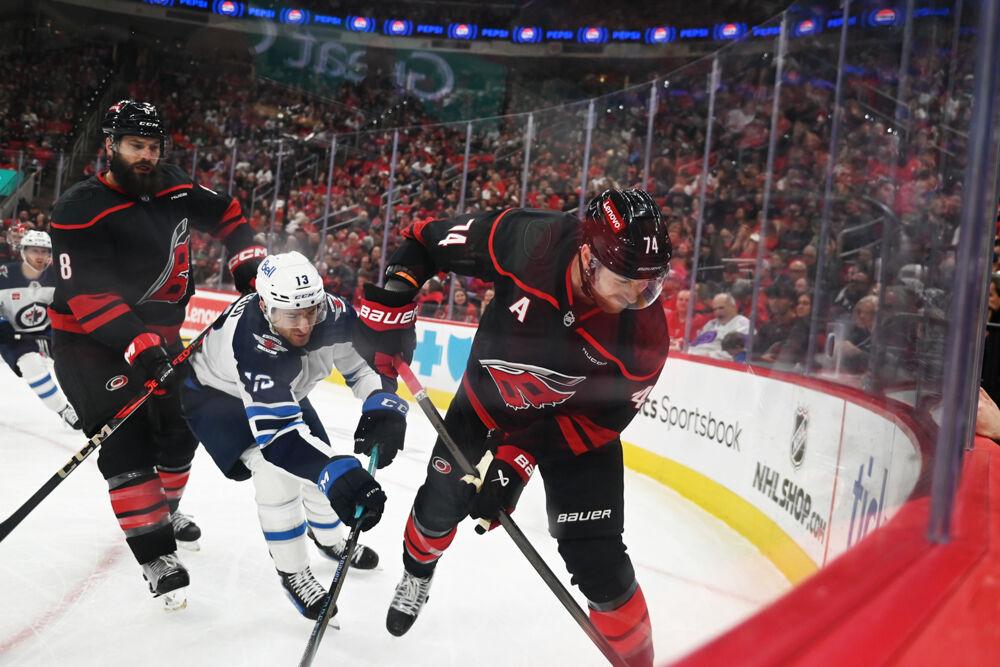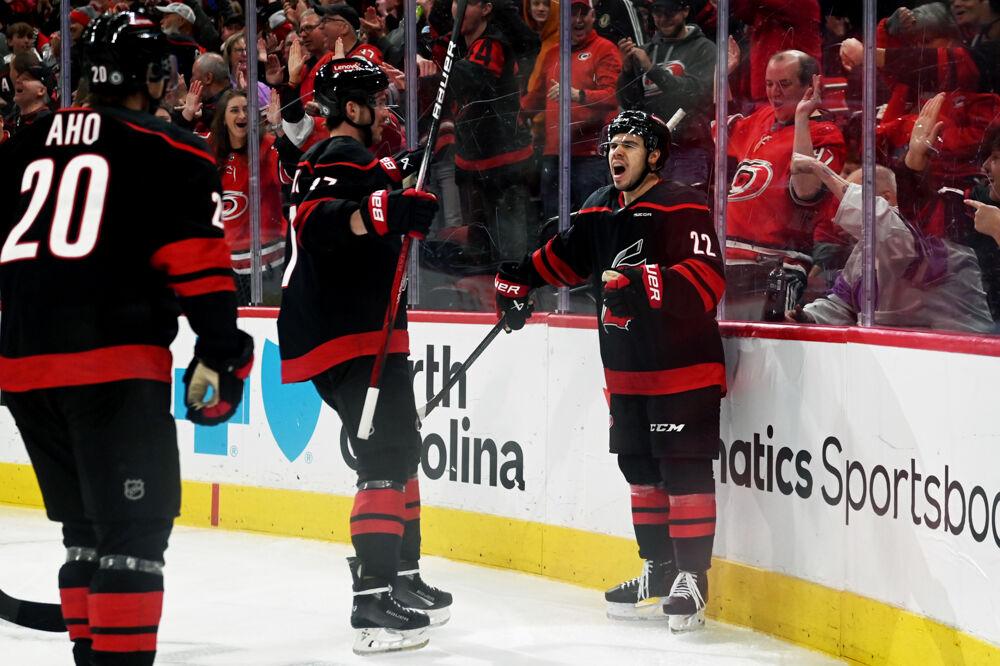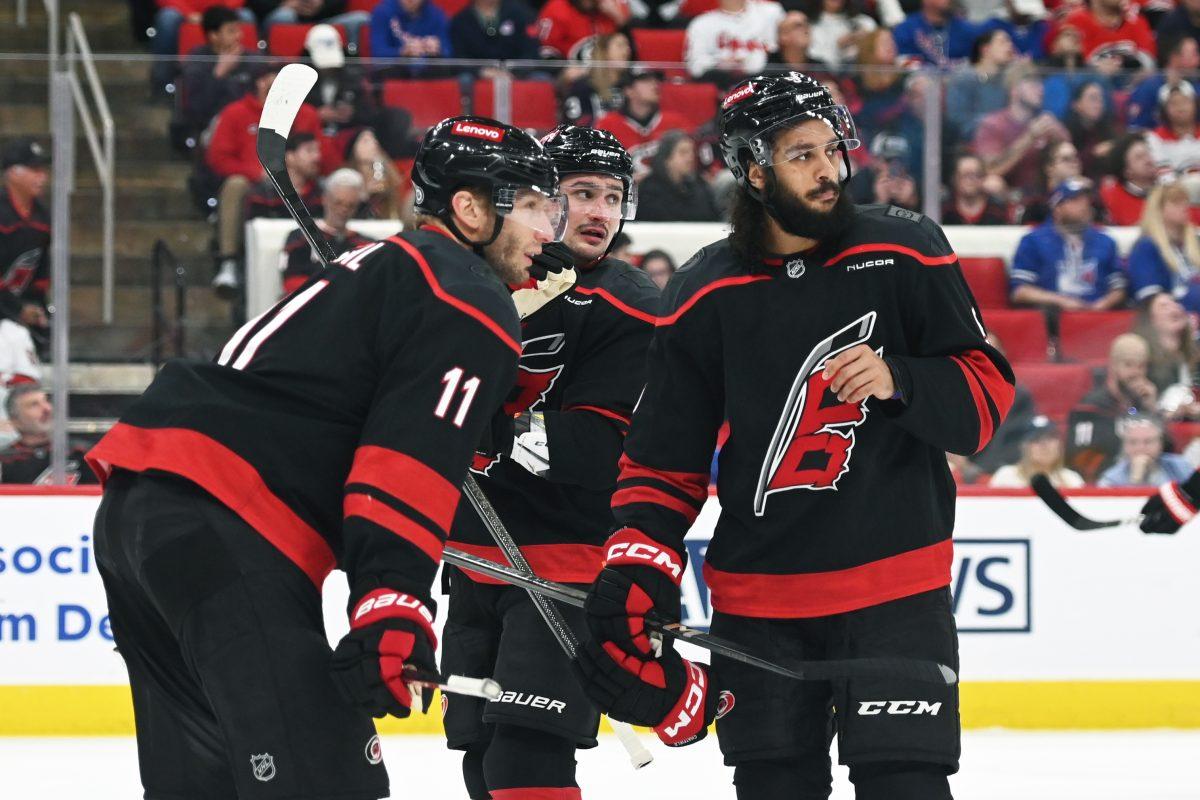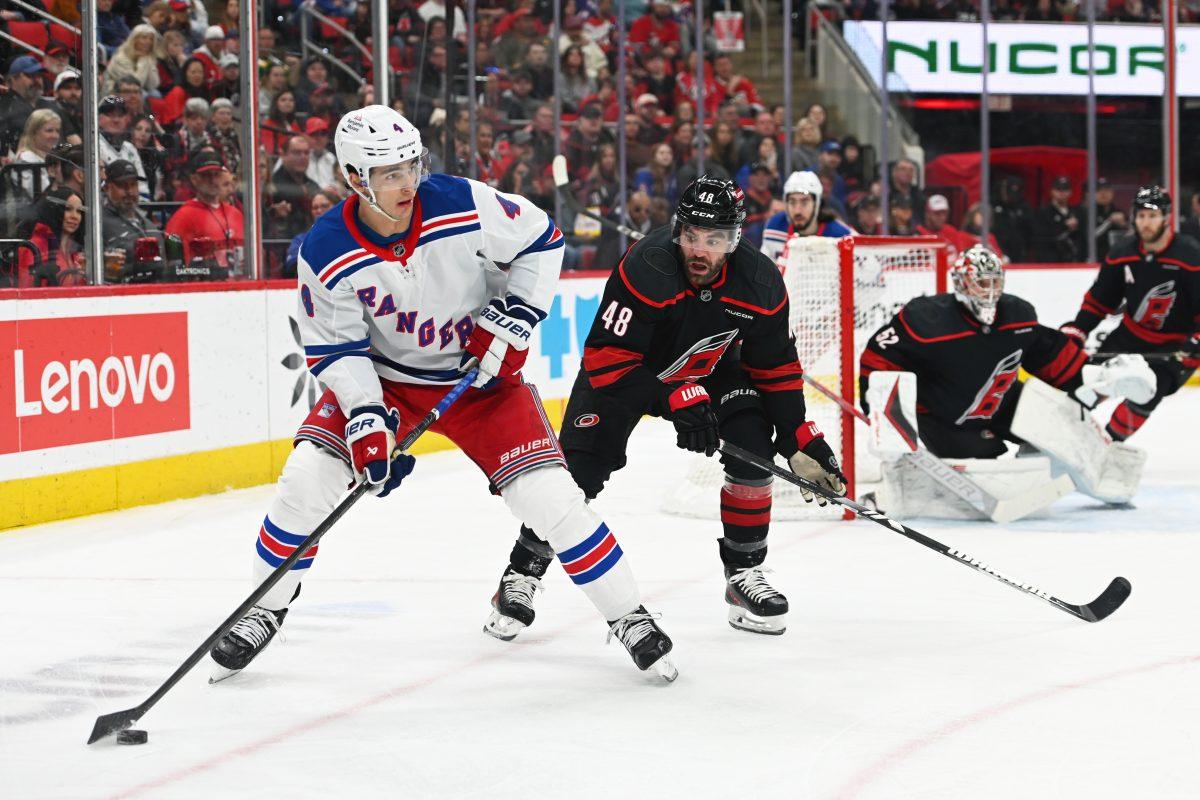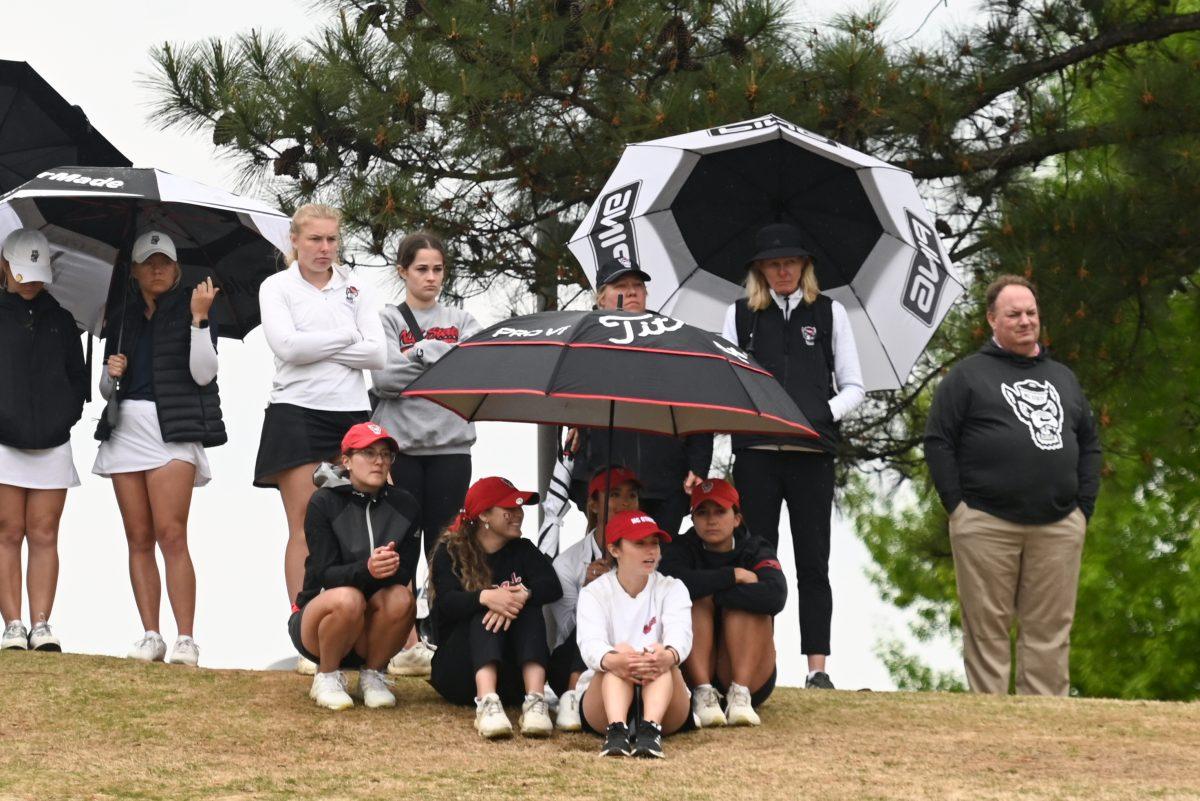Barring a miracle over the last 10 games of the season, the Carolina Hurricanes will be watching the Stanley Cup Playoffs on the sidelines for a seventh-straight year.
The team sits seven points behind the Detroit Red Wings for the Eastern Conference’s final wild-card spot, meaning it needs help to make the playoffs. Despite slim playoff chances, there are plenty of positives to take from the Hurricanes’ 2015-16 season.
First and foremost is the growth of the team’s young defensive core. All-Star and U.S. Olympian Justin Faulk, who leads the group, was having an incredible season before being injured in early February. He was leading the league in power-play goals, the Hurricanes in scoring with 15 goals and 34 points in 55 games and doing everything the team could ask for from the backend.
He played extensive minutes, both at even strength and on both special teams units. He shut down the other teams’ top players and led the rush up the ice with his strong puck-moving ability. With Faulk only 24 years old and under contract for another four years, he will continue to lead the team for years to come.
Joining Faulk has been three rookies — Noah Hanifin, Brett Pesce and Jaccob Slavin. It is rare for a team to get such strong play from one rookie defenseman, let alone three. While Hanifin’s defensive game is still a work in progress, he has made strides in that regard, and his offensive game is something to behold for a 19-year-old. Hanifin’s skating ability is already at an elite level, and he is excellent at joining the rush defensively, being able to skate the puck up the ice and show off his playmaking ability in the offensive zone.
Pesce has provided solid defensive play in the top four, helping both the power play and penalty kill. Pesce also shows great puck-moving ability like Faulk and Hanifin, and has an impressive slap shot that has been a good asset to the Hurricanes’ offense.
It is Slavin, however, who has been the real asset. Since Faulk’s injury, Slavin has played extensive minutes for the team, basically stepping into Faulk’s role. He draws the other team’s best players, plays in all situations and has definitely been the team’s best defenseman with Faulk injured.
Like Hanifin, Slavin displays a strong skating ability and poise with the puck, and already has a very good defensive acumen. These three should continue to develop and get better with age and experience. Along with Faulk and some other defensive prospects in the organization, the future on the backend is incredibly bright.
While it is still a work in progress, the team’s forward corps has made big strides this year as well. Jordan Staal has finally looked like the player the Canes traded for at the 2012 draft, giving the team Selke-level two-way play.
Staal consistently plays against the other teams’ top line and shuts them down. The box score for any Hurricanes game since early December often shows zeros across the board for the other team’s top line. Staal also increased his scoring and had formed a dominant line with wingers Andrej Nestrasil and Joakim Nordstrom prior to Nestrasil’s season-ending back injury.
Following an impressive rookie year, center Victor Rask has continued to show strides in his game, setting career highs with 16 goals and 41 points while also showing a nice defensive game. Rask’s regular linemate, Jeff Skinner has bounced back this season, leading the team with 25 goals and 44 points after a disappointing season last year, and his defensive game has continued to improve under head coach Bill Peters.
The third piece of this line, rookie winger Phillip Di Giuseppe has provided the line with a good forechecker and net front presence. He has chipped in with some secondary scoring, and his straight line, power forward game has been a good complement to Skinner’s game.
Goaltending was an issue early, but Eddie Lack, who is under contract for two more years, has rebounded nicely following a rough first two months.
All these factors, and the team adapting to Peters’ system, led to a 16-8-5 run from an awful 5-1 loss to the New Jersey Devils on Dec. 3 to Faulk’s February injury. This inspires hope that the team can have a good season with its young core and a better start next year. That, combined with the freed up salary the team will have this summer and its plethora of draft picks to use in trades to upgrade the roster, paints a strong picture for next season.
While the Canes’ 2015-16 season will ultimately end in disappointment like the six that preceded it, it was certainly an important year in terms of developing pieces for future success. There are plenty of positives to take from this season, ones that should help the team’s chances of ending its playoff drought next year.



